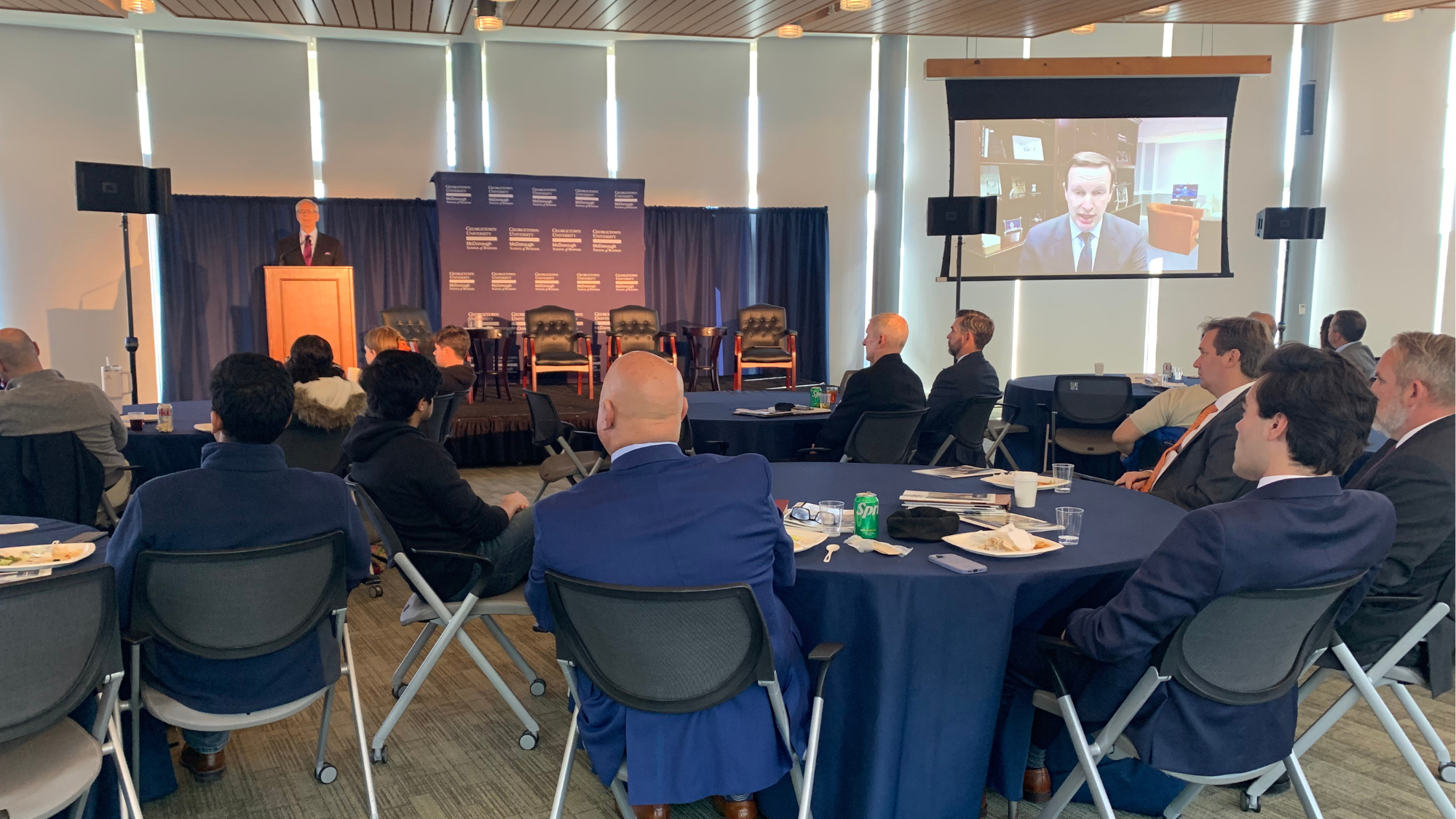Georgetown Study Finds Essential Workers Carry Brunt of Medical Debt
Washington D.C. – A new report released by Business for Impact at Georgetown University’s McDonough School of Business found that asset-limited, income-constrained and employed (ALICE) patients are currently experiencing the most significant burden of medical debt in collections, do not qualify for medical debt forgiveness, and their financial hardship is steadily escalating.
The second annual report on medical debt, The Casualties of Medical Debt: Sicker Consumers and Sicker Hospitals, drew on publicly available data and more than 80,000 active medical debt case files. It finds the overwhelming majority of people who carry medical debt (nearly 70% of the case files reviewed) fall into the ALICE category, which includes at least 35 million households in the United States.
“It is imperative that companies explore strategies that can empower ALICE patients with better financial education and contribute to their overall well-being,” said Hank Cardello, executive director of Leadership Solutions for Health and Prosperity at Georgetown University’s McDonough School of Business. “If nothing more is done to address this vulnerable group of Americans, we shouldn’t expect the medical debt crisis to get any better; in fact, it’s likely to get worse.”
After analyzing financial data from 28 healthcare systems, the study also found that unpaid medical debt places undue financial strain on healthcare providers and makes them ‘sicker.’ The report found that 68% of the medical debt owed to healthcare providers remained unfulfilled, with the vast majority of this unmet financial responsibility borne by ALICE patients.
These concerns are happening against a backdrop where the median operating margin for hospitals in the United States is 0%, according to the American Hospital Association, and more than half of hospitals reported a loss at the end of 2022.
“Unpaid medical debt is putting undue financial stress on many healthcare providers at a time when they’re being squeezed on other costs,” said Cardello. “This can contribute to healthcare providers cutting back on services to save money, which often results in fewer services available to patients. In some instances, especially in rural regions, poorly performing hospitals have shut down altogether and have left large populations without a hospital in their area.”
This year’s whitepaper also includes recommendations for how employers, health systems, insurers, and collections agencies can address the ongoing medical debt crisis:
- Provide more assistance to those least able to repay medical debt (ALICE Patients): Providers should cap out-of-pocket costs, adjust bills upfront and set affordable/flexible repayment plans at the outset.
- Expand Medicaid to more states: In its first two years, Medicaid expansion reduced medical debt sent to collections by $3.4 billion. Increasing access to Medicaid can help reduce overall unpaid debt sent to third-party collections by $1,140 per person, according to a study published in the Journal of Public Economics.
- Provide relief to hospitals: The government needs to better match accelerating hospital costs, which are exacerbated by ongoing inflationary pressures, or risk loss of services and/or closure of rural facilities.
- Insurers need to get in the game: Insurers should identify patients who need financial assistance long before expensive medical bills become debt, reduce the maximum out-of-pocket requirements, and stop the sale of high-deductible plans to those who can’t afford it.
- A new model for the debt collection industry: There is a clear opportunity for transformation within the healthcare collections industry if certain protocols are adopted by those engaged in helping hospitals and healthcare providers recover unpaid medical debt amounts, such as offering affordable payment plans based on a patient’s ability to pay, not charging interest or fees on outstanding amounts, eliminating legal threats or actions on patients, preventing healthcare debt buyers from re-selling accounts, implementing audit mechanisms to validate the authenticity of all debts and cease collection on any debt found to be inaccurate, determine upfront if the debt qualifies for charity, and shift the collections model from “one and done” to helping patients get on sounder financial footing.
For a deeper analysis of the state of medical debt in this country and recommendations for addressing it, read the full report.
About Business for Impact
Business for Impact at Georgetown University’s McDonough School of Business is founded on the belief that companies can be a powerful force for good. We strive to help solve today’s most pressing issues through delivering world-class education, impactful student experience, and direct action with corporations, nonprofits, and government. Our aspiration is that Georgetown-educated leaders will be renowned for managing the triple bottom line – people, planet and profit. Learn more at businessforimpact.georgetown.edu Follow us on X: @GUBizforImpact.
About Georgetown University’s McDonough School of Business
Located at the global intersection of business, policy, and international relations in the capital of the United States, Georgetown University’s McDonough School of Business draws upon its access to business, government, policy makers, nonprofits, and the diplomatic community, as well as the expertise of Georgetown’s other renowned schools, to bring an interdisciplinary and experiential approach to learning and scholarship. Rooted in Georgetown’s Jesuit tradition, the school prepares undergraduates, graduate students, and participants in customized executive education courses to become globally minded, principled leaders in service to business and society. Learn more at msb.georgetown.edu. Follow us on X: @msbgu.
About Capio
Capio is the nation’s leading purchaser of non-performing healthcare accounts, driven by a mission to help people burdened with medical debt achieve financial wellness. Our innovative solutions offer healthcare organizations immediate access to cash, reinforcing their revenue cycle, and instilling trust in the knowledge that patients are under the care of a seasoned, healthcare-focused team.
To date, Capio has successfully acquired and provided exceptional consumer service through partnerships with over 800 esteemed provider clients nationwide. For further insights into Capio’s mission and services, we invite you to explore our website at capiofi.com.
- Tagged
- Business for Impact
